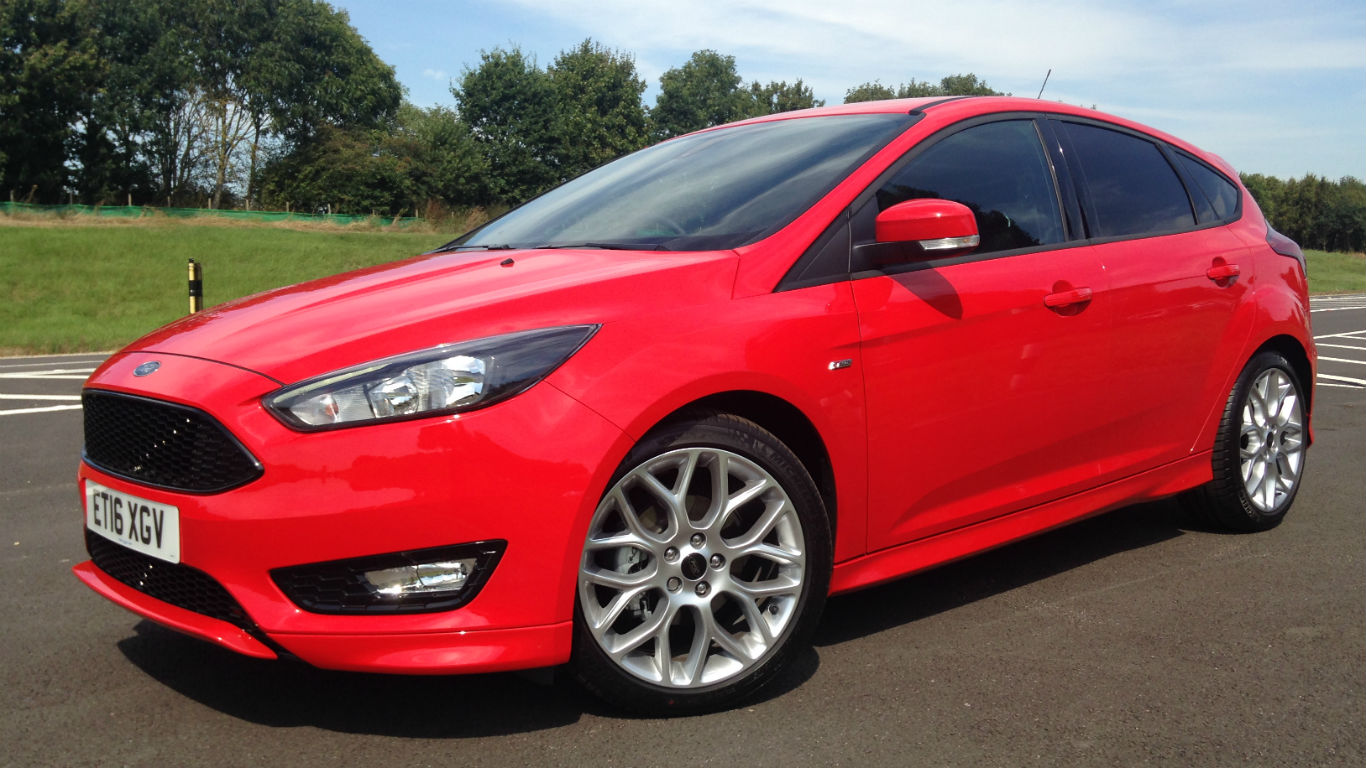 Want bigger biceps without paying for gym membership? Ford has the car for you. Its new ST-Line models offer pumped-up looks without high fuel and insurance bills. More mouth and less trouser, if you will.
Want bigger biceps without paying for gym membership? Ford has the car for you. Its new ST-Line models offer pumped-up looks without high fuel and insurance bills. More mouth and less trouser, if you will.
- New Ford ST-Line models harness RS halo effect
- Ford Focus ST diesel estate (2016) review: Two-Minute Road Test
- Read another car review on Motoring Research
ST-Line is available on the Fiesta, Focus, Mondeo and Kuga and replaces the old Zetec S trim level. As well as racier styling inside and out, you get bespoke alloy wheels and 10mm lower suspension. We tried the Focus 1.5 TDCi diesel in suitably sporty Race Red. Has any of that fast Ford magic rubbed off on this otherwise humble hatch?
Prices and deals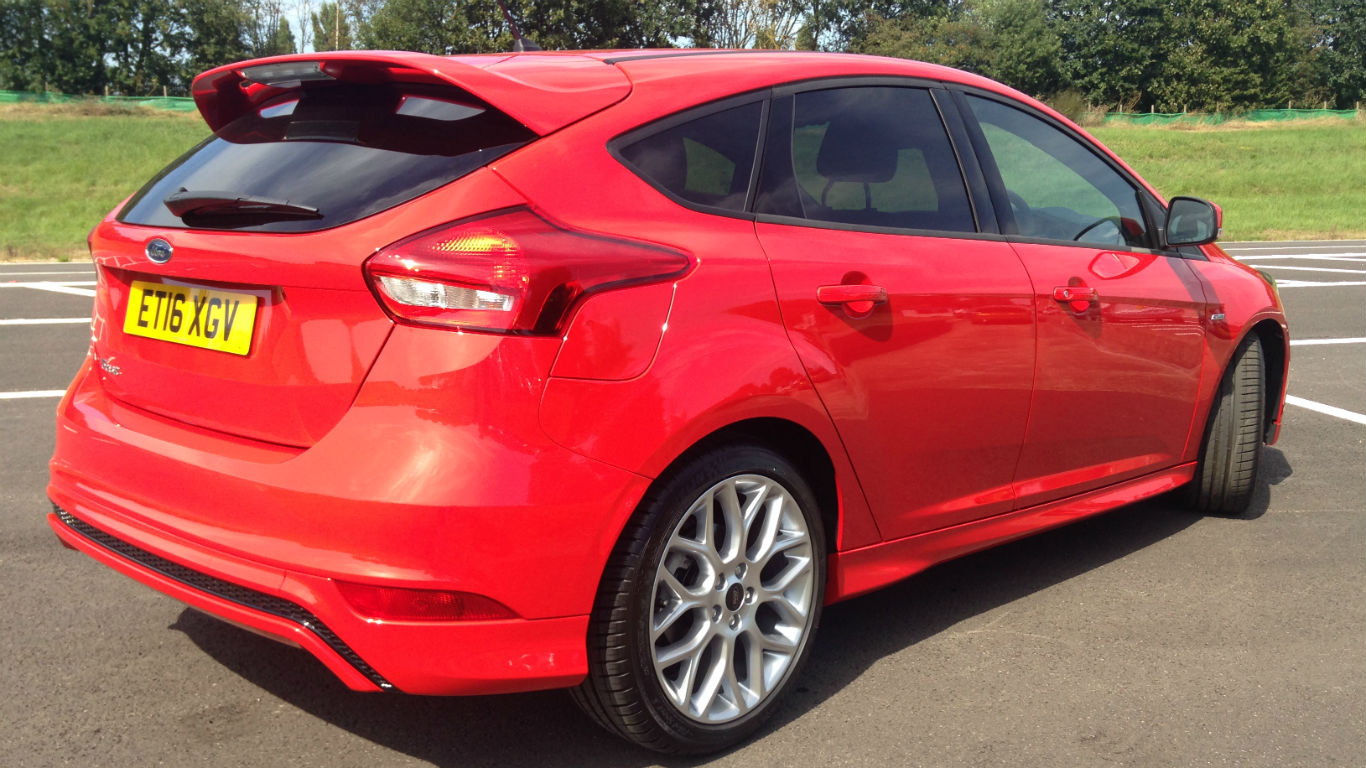
The current Mk3 Ford Focus has been around since 2011, albeit with a facelift in 2014. As one of Britain’s best-sellers and a perennial fleet favourite, it’s not a car you should pay anything close to full price for. Discounts of 25% or more aren’t uncommon if you shop around – and that includes ST-Line versions.
At the time of writing, ‘reverse auction’ website AutoeBid was offering the Focus 1.5 TDCi ST-Line hatchback – similar to the car in our photos – for £15,229. That’s more than 28% below the list price of £21,295.
What are its rivals?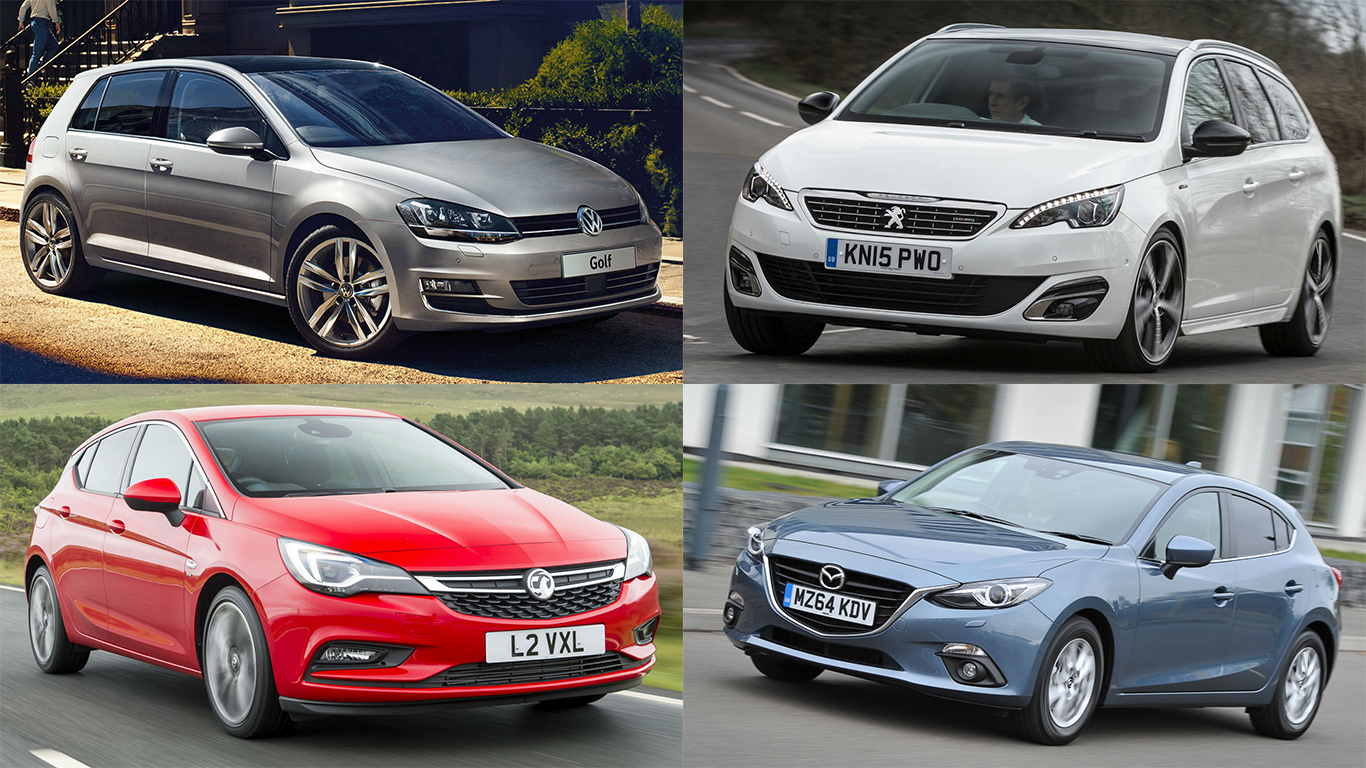
The Focus competes in the heartland of what car-industry types call the ‘C-segment’. As such, its rivals include some very familiar names: the Volkswagen Golf, Peugeot 308, Vauxhall Astra and Mazda 3 to list but a few.
Like the Focus, and the Peugeot pictured, many competitors also come as estate cars. Most also offer a ‘semi-sporting’ trim level to rival ST-Line. Peugeot has its GT Line models, for example.
What engine does it use?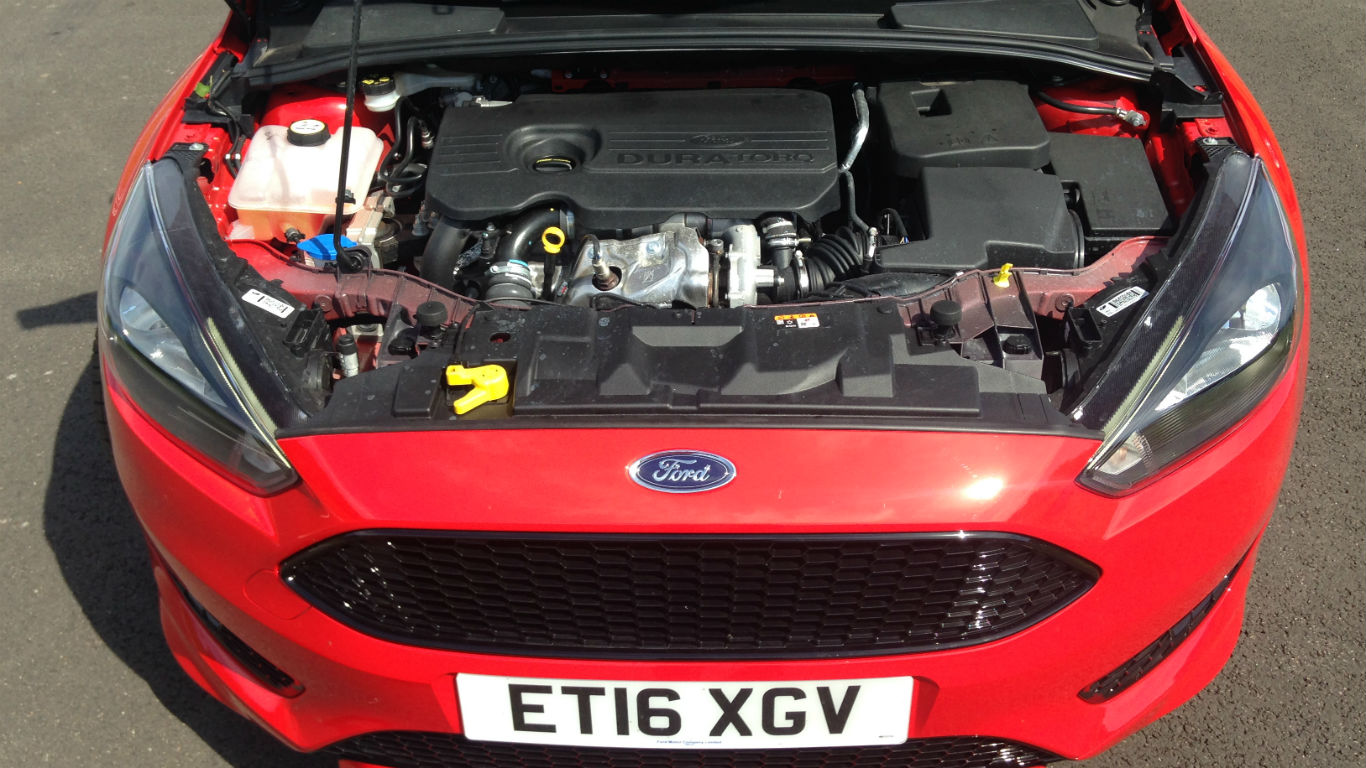
You can buy an ST-Line Focus with one of five different engines. The petrol line-up starts with the hugely popular 125hp 1.0-litre Ecoboost, then the 1.5 Ecoboost in 150hp or 182hp outputs. If you prefer diesel, there’s the 120hp 1.5 TDCi tested here, plus a 150hp 2.0 TDCi.
The most powerful petrol and diesel engines are only available with a manual gearbox – all others can be specified with an auto.
How fast?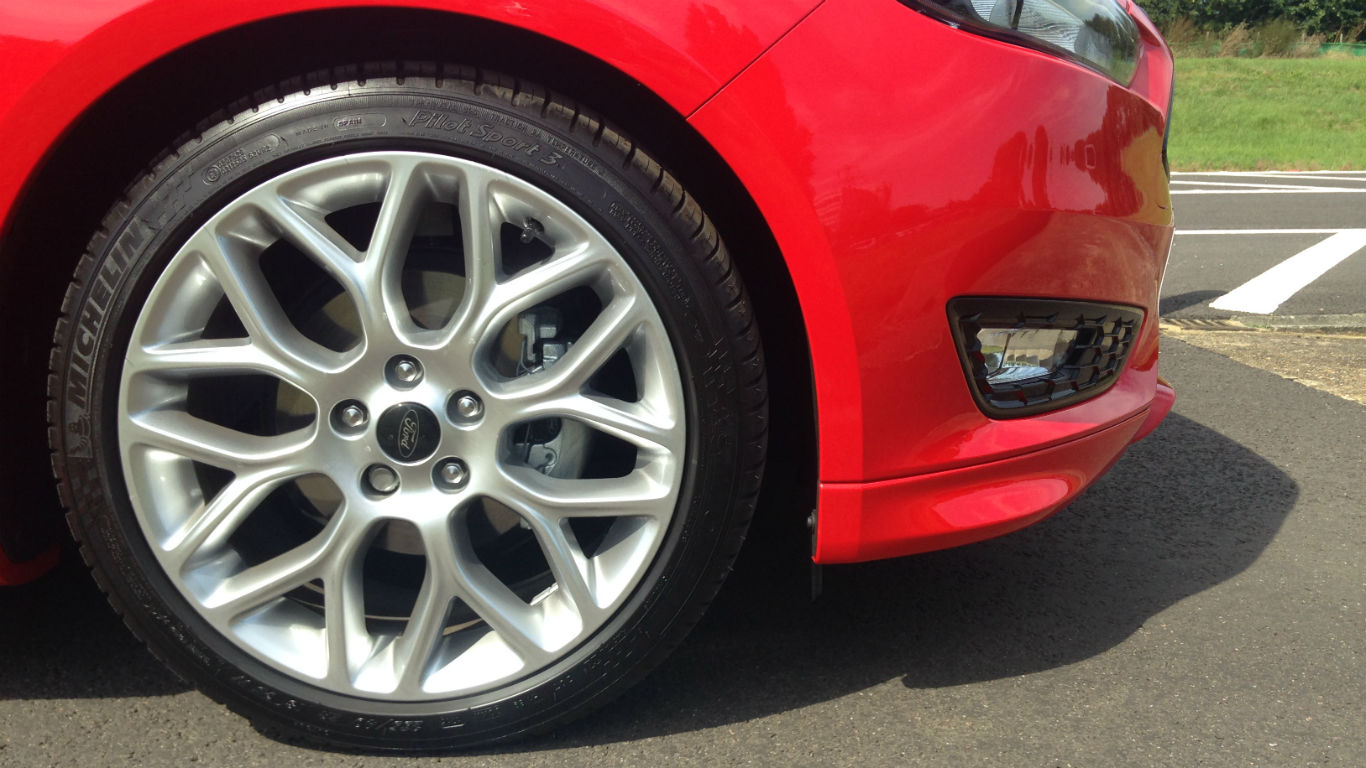
It might boast deeper bumpers and a sizeable rear spoiler, but a 120hp diesel engine doth not a hot hatch make. The 1.5 TDCi hits 62mph in 10.5 seconds and has a top speed of 120mph. Compare that to 8.1 seconds and 135mph for the ‘proper’ ST diesel – or 6.5 seconds and 154mph for the ST petrol.
Nonetheless, ‘our’ Focus doesn’t feel slow. With maximum torque from 1,750rpm, there’s enough mid-range muscle for brisk overtaking. Its smooth, but not particularly quiet.
Is it comfortable?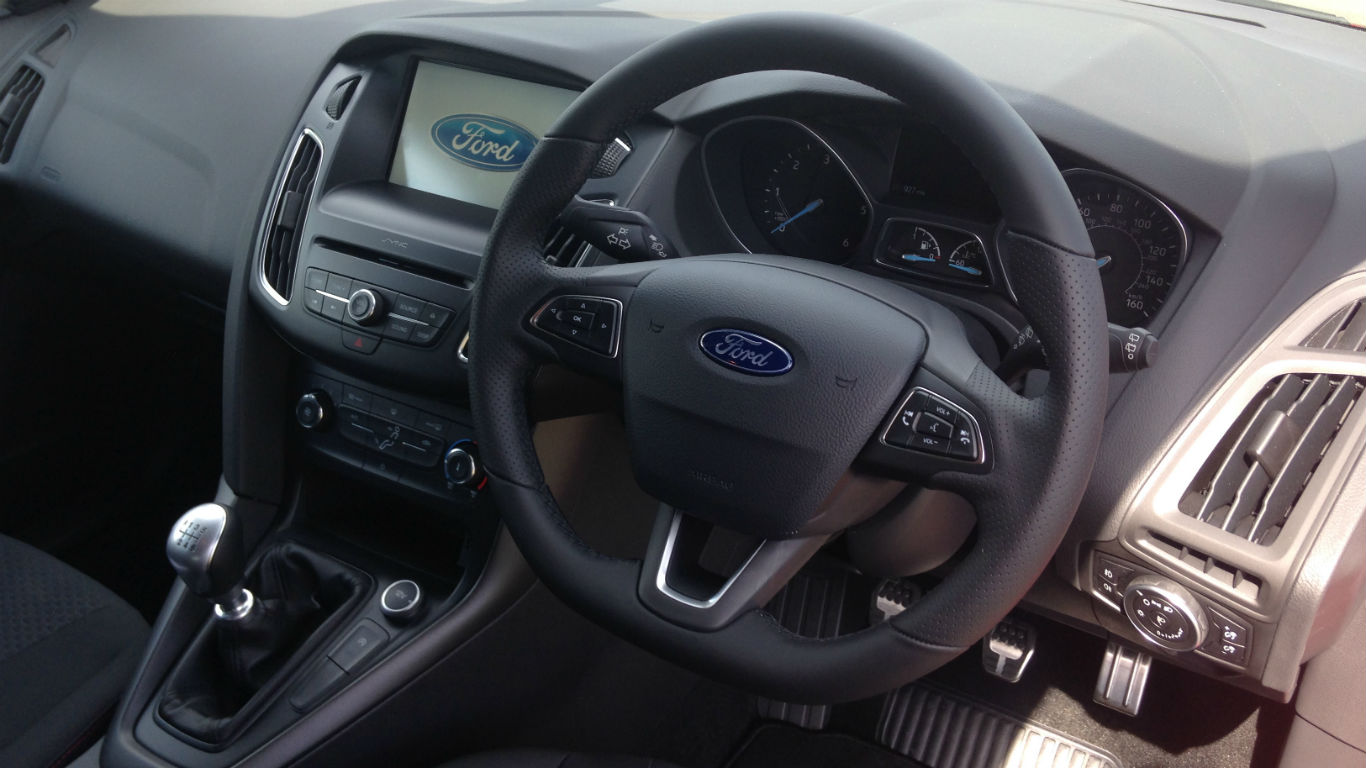
ST-Line cars sit 10mm closer to the ground on slightly stiffer suspension. Without driving one back-to-back with a regular Focus, we struggled to tell the difference. Suffice to say, the ST-Line still offers a good compromise between responsiveness and refinement.
Inside, sports seats look the part, but won’t hug your hips like a pair of ST-spec Recaros. Look closely and you’ll also spot an ST gearknob, aluminium-faced pedals and a smattering of red go-faster stripes. Fancy.
Will I enjoy driving it?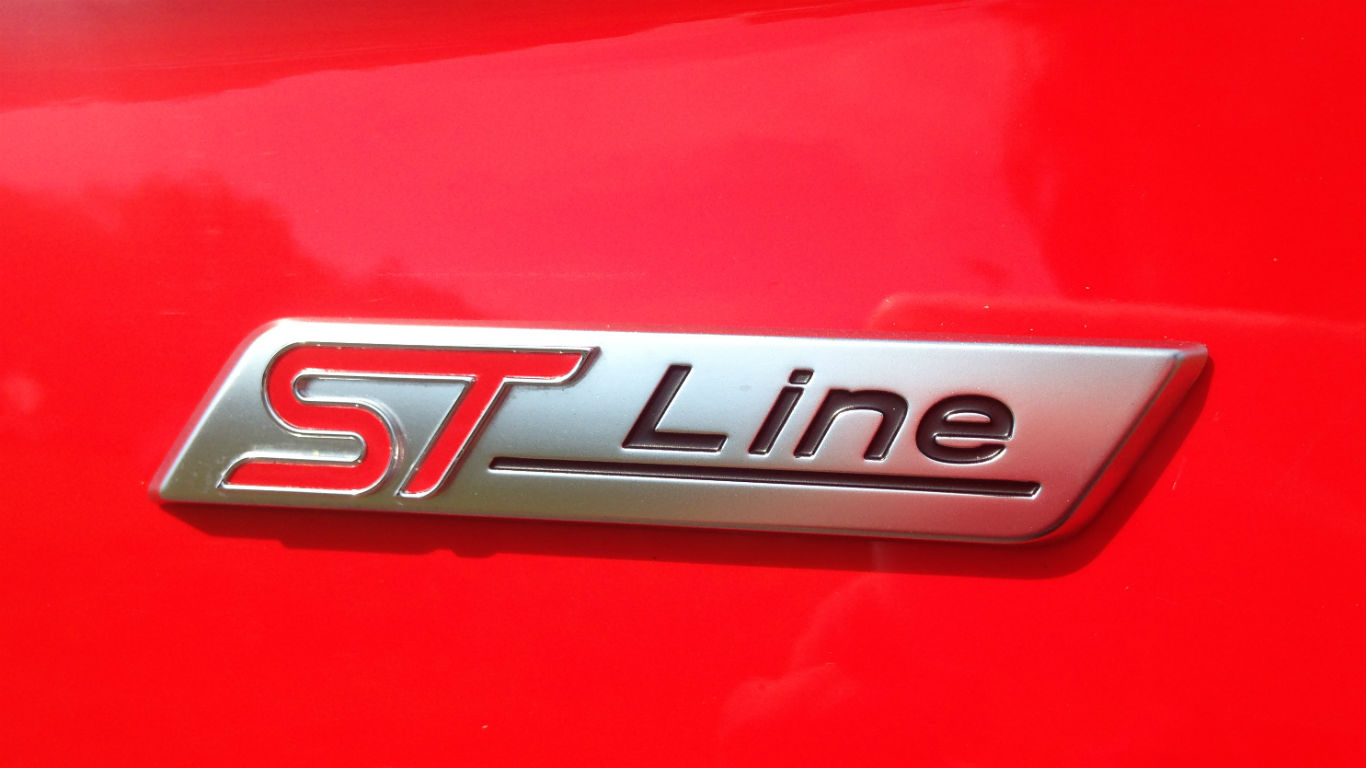
The Focus has always been a family car for people who actually like driving. And while the latest model isn’t a dynamic benchmark like the 1998 original, it’s still an engaging and entertaining steer. Proof you don’t need a hot hatch to have fun, in other words.
Drop the kids off, find a quiet B-road and take time to appreciate the Ford’s taut chassis, direct steering and confidence-inspiring brakes. It feels poised and precise – without sacrificing long-distance comfort.
Fuel economy and running costs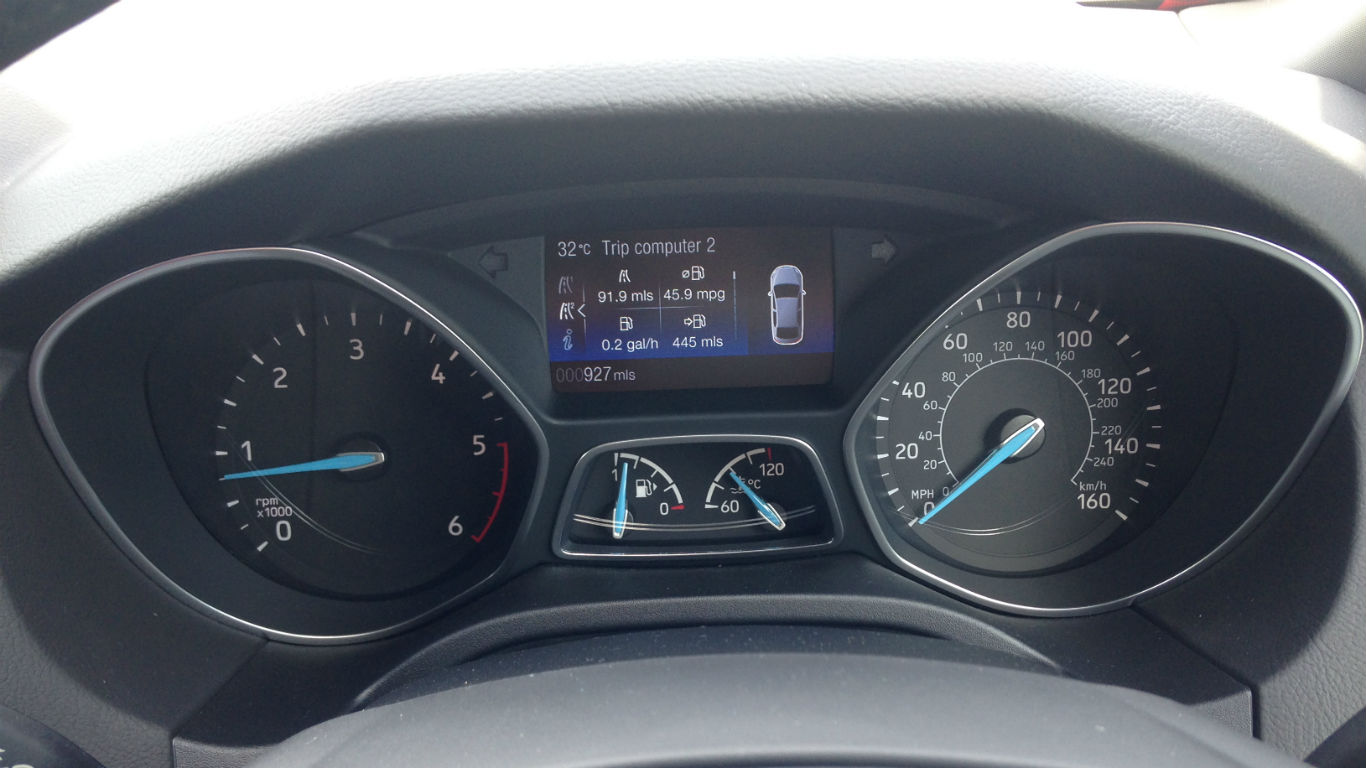
Here’s the good bit. Behind all that Race Red, ST-branded attitude is an engine that emits a tax-free 99g/km of CO2, plus official fuel economy of 74.3mpg. Interestingly, the figures for the estate version are exactly the same, although you’ll pay an £1,100 premium for the bigger boot.
It’s worth remembering that ST-Line trim costs £1,250 more than the default Focus Zetec, however. That’s the price of style.
What’s the interior like?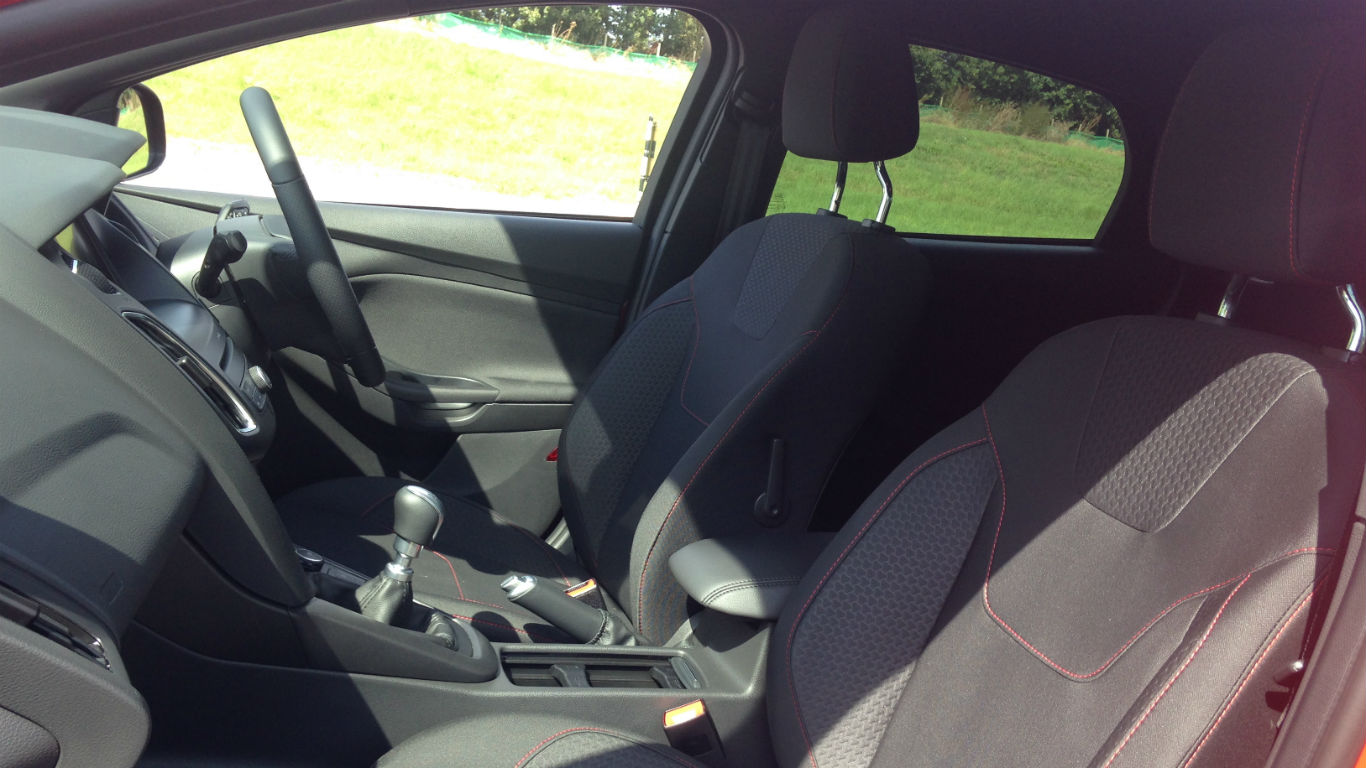
Those ST-Line additions give the Ford’s interior a useful lift, but there’s no escaping the slightly cheap plastics and fussy design. The general ambiance is no better than an equivalent Hyundai or Kia – and some way behind the rival Volkswagen Golf.
You won’t have any problems getting comfortable, though. The driving position offers a wide range of adjustment and all controls are within easy reach. The chunky, three-spoke steering wheel gets a thumbs-up from us, too.
Is it practical?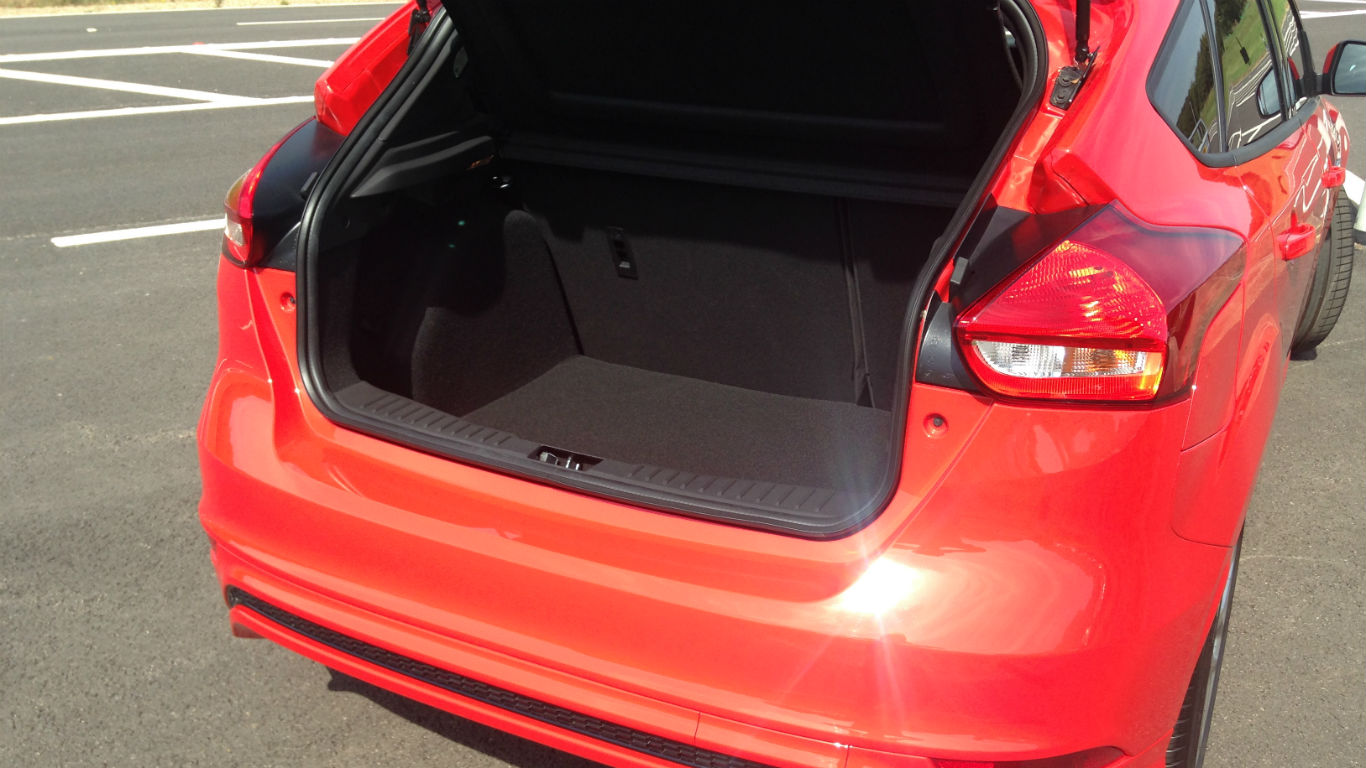
Unlike previous models, the Mk3 Focus hatchback only comes with five doors, so access to the rear seats isn’t an issue. There’s ample room for children (with standard Isofix mountings for child car seats), but taller adults may lament the lack of legroom.
The Focus hatch certainly isn’t as practical a crossover, such as the Nissan Qashqai. Boot space is 316 litres, or 1,215 litres with the rear seats folded. Compare that to 370/1,210 litres in the Astra and 380/1,270 litres in the Golf. Opt for the Focus Estate, however, and capacity swells to 476/1,502 litres.
Tell me about the tech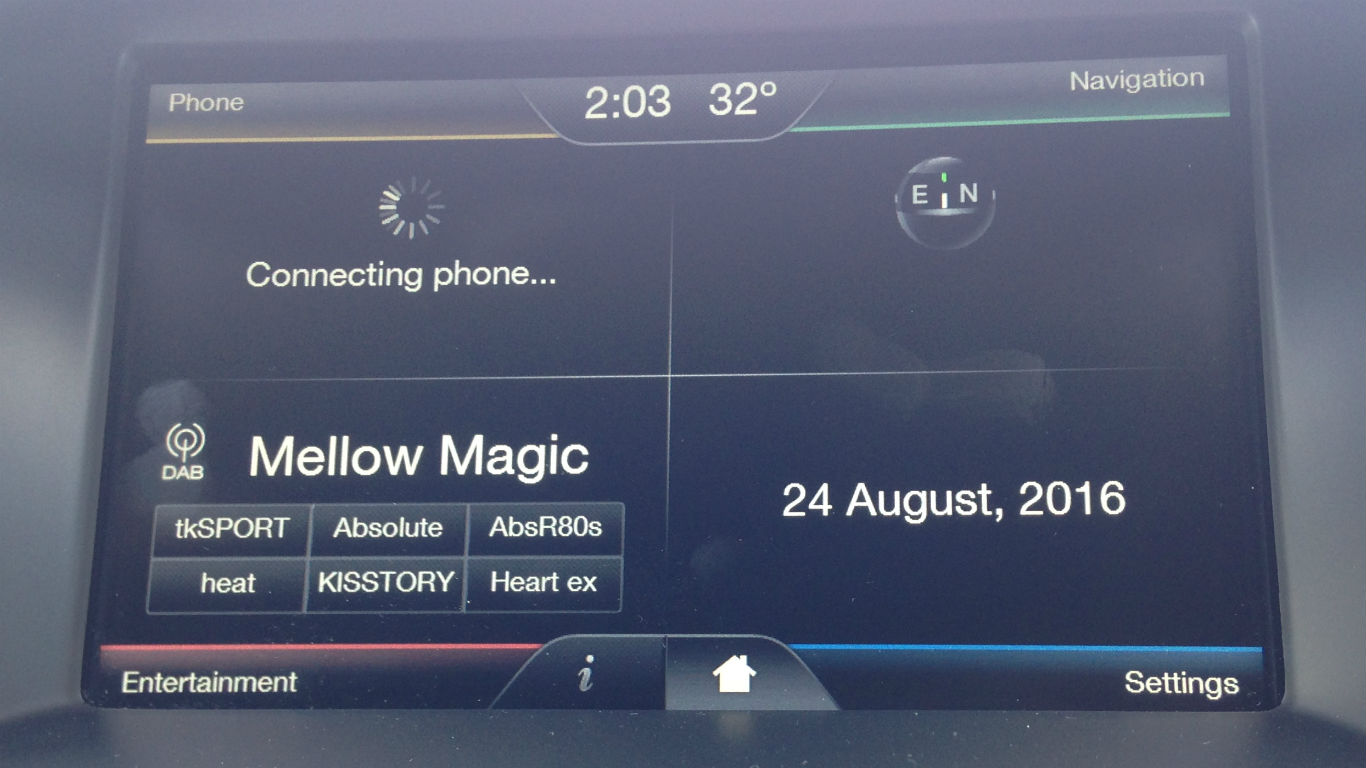
Before its mid-life facelift, the Focus dashboard was a veritable button-fest, not unlike an old mobile phone. Now there’s a neat colour touchscreen, which is located high on the dashboard, easily within the driver’s line of sight. It’s straightforward to use, with bold, bright graphics and intuitive sub-menus.
It’s certainly worth paying £300 for Ford’s Sync2 navigation system. We’d also fork out £225 for rear parking sensors, although the £250 rear-view camera seems like overkill. Bluetooth phone connectivity is standard across the Focus range.
What about safety?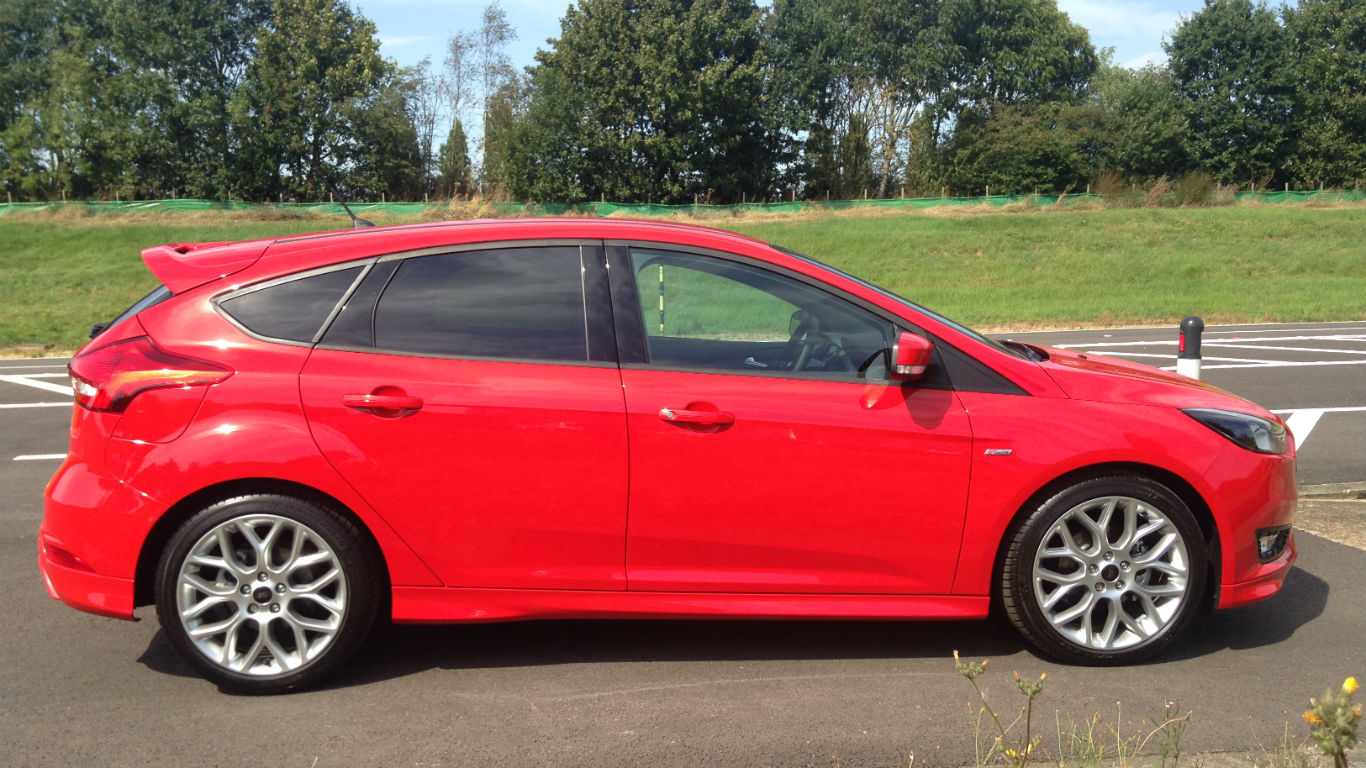
The Focus scored a full five stars in Euro NCAP crash tests. Standard safety equipment includes six airbags and electronic stability control.
We think Active City Stop (an automatic emergency braking system) is well worth an extra £200. Alternatively, you could simply upgrade to the £550 Driver Assistance Pack, which includes Active City Stop, plus lane-assist, automatic headlights and wipers, traffic-sign recognition and a driver alertness monitor.
Which version should I go for?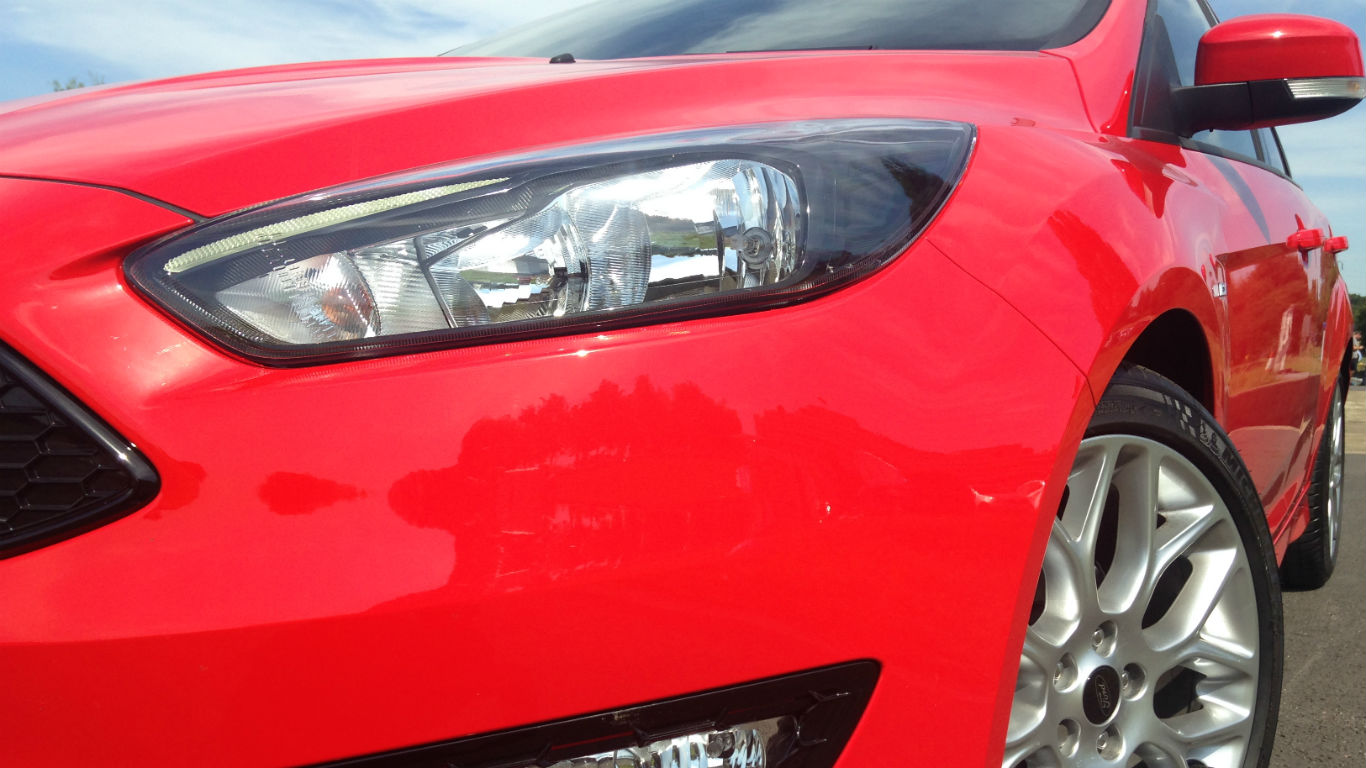
What we’re really asking here is ‘Should I go for ST-Line?’. And, without wanting to sit on the proverbial fence, the answer really depends on your priorities. For the same money (starting from £20,595), you could have a Focus in Titanium-spec, which comes with front foglights, Active City Stop, rear parking sensors and automatic lights/wipers – all extra-cost options on the ST-Line. However, you’d do without the sporty bodykit and lower suspension.
Then again, the Focus Zetec offers all the features you really need for around £1,700 less. You pays your money…
What’s the used alternative?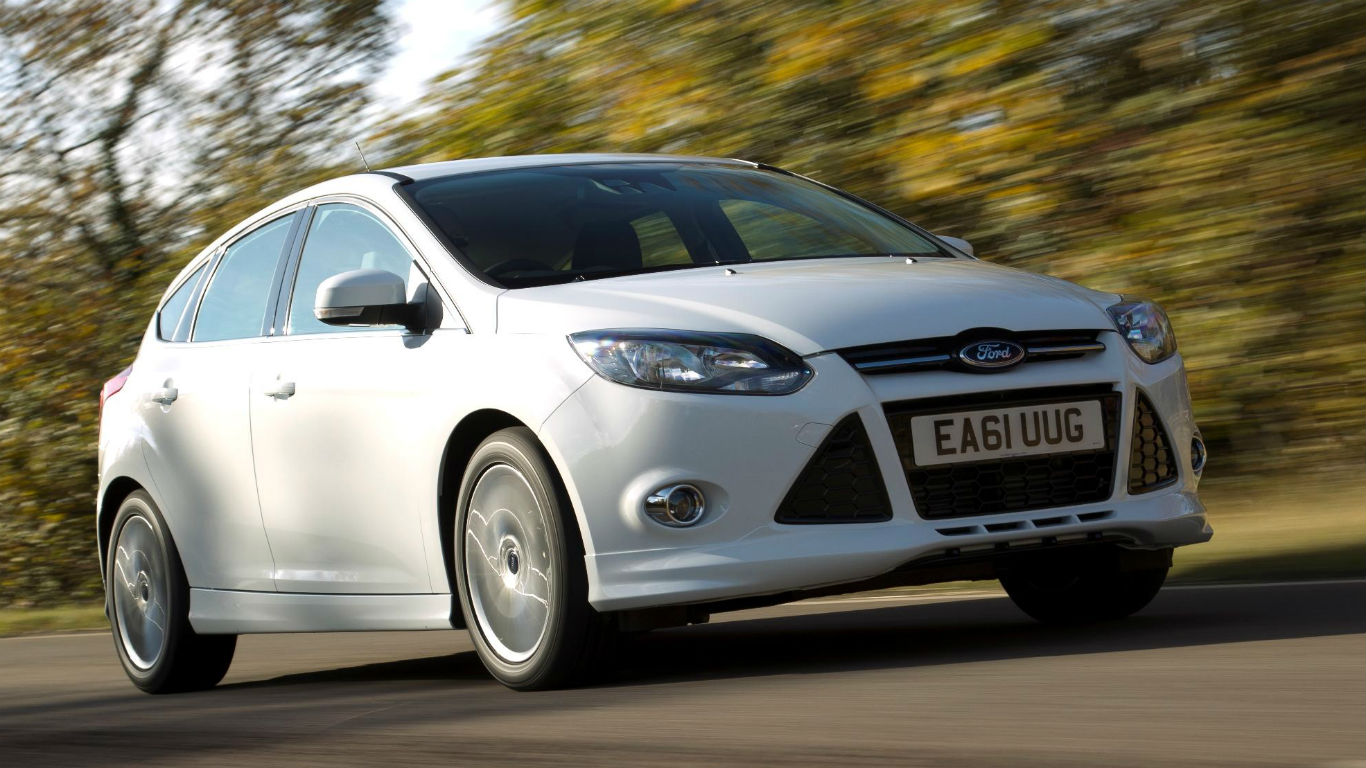
The obvious used equivalent to a new Focus ST-Line is the outgoing Focus Zetec S. This model has been around since late 2011, so there are cars in the classifieds to suit most budgets. The Zetec S came with a bodykit, 17-inch alloy wheels and suspension that was 28% stiffer than the standard car. Some also had part-leather seats.
Us? We’d be tempted to put any money saved upfront towards the (hefty) fuel bills for a full-fat Focus ST.
Should I buy one?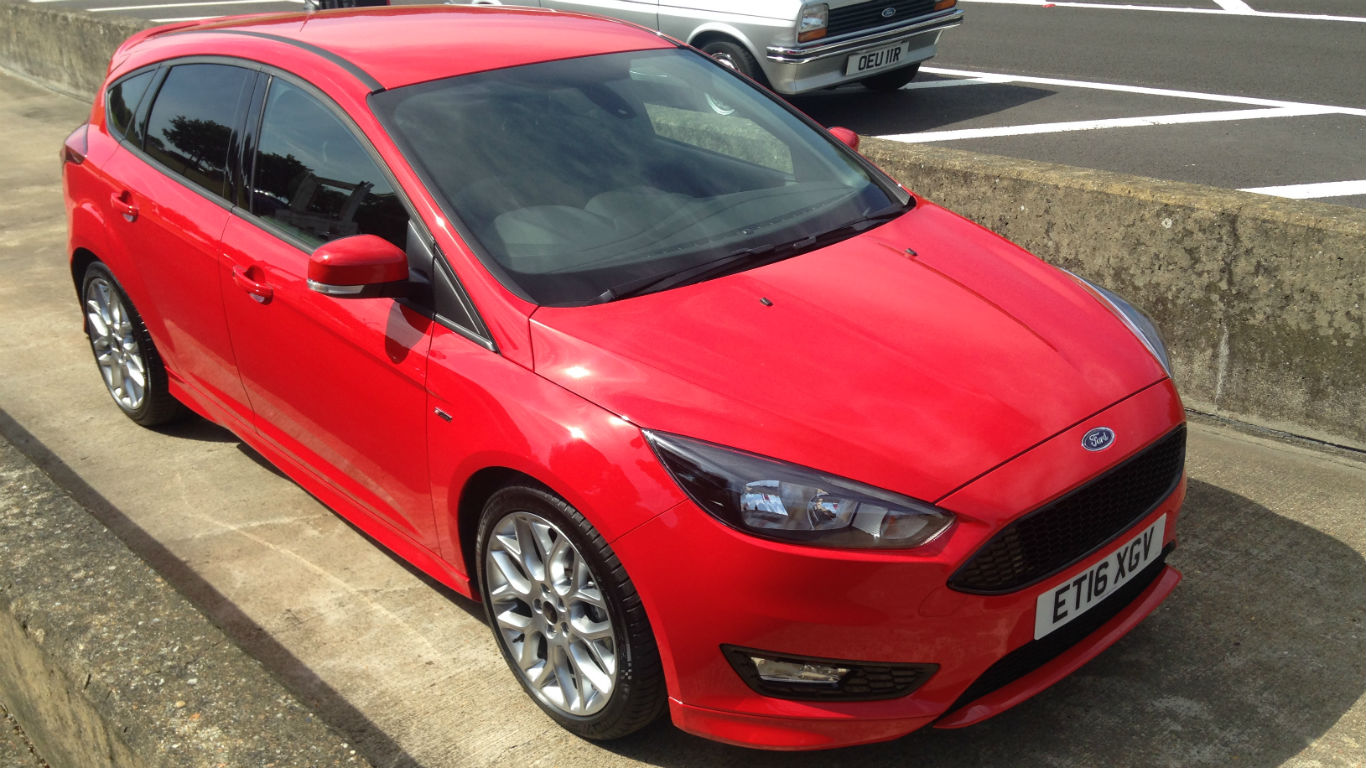
Everybody loves a fast Ford. And while the Focus ST-Line isn’t technically, um, fast, it looks the part. For many, that will be reason enough to buy one.
Importantly, ST-Line trim doesn’t detract from the Focus’s traditional strengths: agile handling, decent comfort and practicality, and an attractive price-tag (especially after discount). If you’re in the market for a C-segment car, it should definitely be on your shortlist.
Pub fact
Ford first used its iconic RS badge in 1968, but the ST name didn’t appear until 1997. The Mondeo ST24 (pictured) had a 170hp 2.5-litre V6 and a bulbous bodykit. It lasted for just two years, before being replaced by the 200hp Mondeo ST200 in 1999.
ST versions of the Fiesta and Focus followed soon after, with the high-point of the saga being the latest Fiesta ST: one of the greatest hot hatches ever made.
ALSO READ
This is how Peugeot Citroen calculates real-world fuel economy